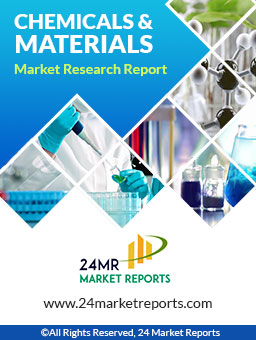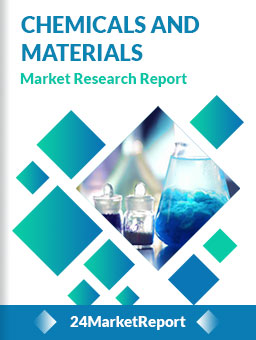
COMPANIES COVERED
HuntsmanDownload FREE Report Sample
Download Free sampleDefinition
Epoxy Phenol Novolac (EPN) resins are multifunctional epoxy polymers synthesized by reacting phenolic novolac resins with epichlorohydrin. Distinguished by an epoxy functionality greater than two, EPNs cure into densely cross‑linked networks, delivering exceptional thermal stability (Tg > 150 °C), chemical resistance, and mechanical strength. These attributes make EPN indispensable in high‑performance adhesives, corrosion‑resistant marine and industrial coatings, composite matrices for aerospace and wind energy, and the synthesis of epoxy vinyl esters used in chemical‑storage tanks and piping.
Market Size
Global Epoxy Phenol Novolac market size was estimated at USD 230.40 million in 2024 and is projected to reach USD 325.10 million by 2032, exhibiting a CAGR of 3.90% during the forecast period
North America accounts for USD 64.12 million (28 % share) and will grow at a 3.34 % CAGR through 2032, propelled by infrastructure rehabilitation and demand for high‑temperature composites in aerospace. Asia‑Pacific leads consumption with 42 % share, underpinned by China’s chemical‑tank manufacturing and South Korea’s semiconductor clean‑room flooring needs. Historical data (2020‑2024) show modest 3.5 % annual market growth, tempered by raw‑material price volatility yet buoyed by stringent VOC regulations that favor solvent‑free epoxy systems.
Market Dynamics (Drivers, Restraints, Opportunities, and Challenges)
To know more about market statistics, Download a FREE Sample copy
Drivers
Infrastructure Modernization: Aging bridges, pipelines, and storage tanks require EPN‑based coatings for extended service life.
Electronics Miniaturization: EPN’s low coefficient of thermal expansion (CTE) supports high‑density semiconductor encapsulation.
Stringent Environmental Regulations: Shift from solvent‑borne alkyds to solvent‑free epoxies boosts EPN demand in protective coatings.
Composite Growth in Renewable Energy: Wind‑turbine blade production utilizes EPN matrices for superior fatigue resistance.
Restraints
High Production Costs: Phenol and epichlorohydrin price fluctuations squeeze margins.
Processing Complexity: High viscosity necessitates pre‑heating or solvent dilution, complicating application workflows.
Competitive Substitutes: Bisphenol‑A epoxies and novolac vinyl esters can replace EPN in cost‑sensitive applications.
Opportunities
3D‑Printed Composites: Emerging additive‑manufacturing techniques for aerospace brackets favor low‑shrink EPN resins.
Bio‑Based Feedstocks: Development of lignin‑derived phenolic novolacs can create greener EPN offerings.
Smart Coatings: Incorporating graphene or nanoclay into EPN matrices enables self‑sensing corrosion protection.
Challenges
Supply Chain Disruptions: Geopolitical tensions affecting phenol and caustic soda supply could impede production.
REACH & RoHS Compliance: Tightening regulations on chlorinated precursors demand process innovation.
Skilled Workforce Shortage: Formulating high‑functionality epoxies requires specialized chemists in limited supply.
Regional Analysis
North America
Europe
Asia‑Pacific
South America
Middle East & Africa
Competitor Analysis (in brief)
Huntsman leads with multifunctional Araldite™ novolacs emphasizing low free phenol. Olin leverages backward integration in chlor‑alkali for cost advantage. Hexion focuses on specialty EPN grades for semiconductor encapsulants. Asian players NanYa Plastics, Kukdo Chemical, and Chang Chun Group supply mid‑viscosity resins at competitive prices. Regional suppliers like SanMu Group and Shengquan gain domestic Chinese share via bio‑phenol R&D. Competitive strategies revolve around viscosity reduction tech, fast‑cure hardener systems, and sustainable phenol sourcing.
Global Epoxy Phenol Novolac: Market Segmentation Analysis
Epoxy Phenol Novolac Market provides a deep insight into the global Epoxy Phenol Novolac, covering all its essential aspects. This ranges from a macro overview of the market to micro details of the market size, competitive landscape, development trend, niche market, key market drivers and challenges, SWOT analysis, value chain analysis, etc. The analysis helps the reader to shape the competition within the industries and strategies for the competitive environment to enhance the potential profit. Furthermore, it provides a simple framework for evaluating and assessing the position of the business organization. The report structure also focuses on the competitive landscape of the Global Epoxy Phenol Novolac. Epoxy Phenol Novolac Market introduces in detail the market share, market performance, product situation, operation situation, etc., of the main players, which helps the readers in the industry to identify the main competitors and deeply understand the competition pattern of the market. In a word, Epoxy Phenol Novolac Market is a must‑read for industry players, investors, researchers, consultants, business strategists, and all those who have any kind of stake or are planning to foray into the Epoxy Phenol Novolac in any manner.
Market Segmentation (by Application)
Market Segmentation (by Type)
Key Company
Geographic Segmentation
FAQ
What is the current market size of Epoxy Phenol Novolac?
Which are the key companies operating in the Epoxy Phenol Novolac market?
What are the key growth drivers in the Epoxy Phenol Novolac market?
Which regions dominate the Epoxy Phenol Novolac market?
What are the emerging trends in the Epoxy Phenol Novolac market?
Key Benefits of This Market Research:
Key Reasons to Buy this Report:
Customization of the Report
Chapter Outline

Speak to our Custom Research Team and get the Custom Research in a budget
Custom ResearchFrequently Asked Questions ?
A license granted to one user. Rules or conditions might be applied for e.g. the use of electric files (PDFs) or printings, depending on product.
A license granted to multiple users.
A license granted to a single business site/establishment.
A license granted to all employees within organisation access to the product.
Upto Working 24 to 48 hrs
Upto 72 hrs max - Weekends and Public Holidays
Online Payments with PayPal and CCavenue
Wire Transfer/Bank Transfer
Hard Copy




 Industry Market Size
Industry Market Size SWOT Analysis
SWOT Analysis Industry Major Players
Industry Major Players Revenue Forecasts
Revenue Forecasts Historical and Forecast Growth
Historical and Forecast Growth Profitability Analysis
Profitability Analysis
























